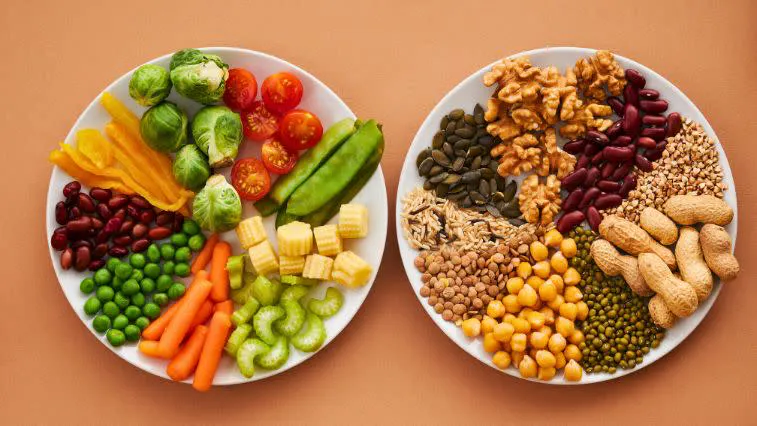Our content strives to support, inform, and motivate you to meet your health goals. We want to be your trusted source of expert- and science-backed info dispensed in simple, actionable ways. Read our Editorial Guidelines.

Source: ROMAN ODINTSOV / Pexels
For most of us, a healthy diet looks very similar with the same basic principles. We should all drink plenty of water, eat several servings of fruits and vegetables per day, include good protein sources, and eat reasonable portion sizes of foods that aren’t highly processed.
However, if you have a specific diet goal, you may need to focus more on key diet changes for that goal. As a registered dietitian, I help clients make these changes all the time. Read below to learn some tips I use to help clients with these goals: weight loss, improved digestion, better heart health, and more energy.
What does a healthy diet for most people look like?
You don’t need to follow a particular diet plan like Whole30, South Beach, or Weight Watchers to be healthy. Instead, you should focus on general concepts to meet your goals.
For most people, a healthy diet consists of the following general guidelines based on the Dietary Guidelines for Americans:

Source: Vanessa Loring / Pexels
- Aim to include a variety of vegetables each day
- Add in a few servings of fruit per day
- Choose primarily whole grains, like quinoa, brown rice, whole grain bread, barley, oatmeal
- Include lean sources of protein, such as beans, chicken breast, pork loin, tofu, fish
- Add in some milk or milk substitutes every day, but choose nonfat or low-fat options if you use cow’s milk
- Choose healthy fats, like avocadoes and olive oil
- Drink plenty of water each day
- Limit added sugars, especially in drinks and snacks
- Eat sweets and treats in moderation
Diet Tweaks for Common Nutrition Goals
To find the right diet for your body and health needs, consider your nutrition goals and your overall health status. Most of the following nutrition tips would help most people eat healthier, but focusing on diet changes for a specific purpose might give you more direction.
Weight loss
I’ve seen many clients in my career who’ve tried extreme measures to lose weight, such as gimmicky diets, limiting carbs too much, and eating too few calories. These changes are often impossible to maintain, make you think about food all day, and take the joy out of eating. Quick fixes usually don’t work and aren’t good for you long term.
Instead of an extreme change to drop weight fast, I recommend smaller, more manageable changes that promote gradual weight loss and build long-lasting healthy habits.
Changes that I recommend to my clients for weight loss include:
- Don’t count calories, but monitor portion sizes. Use a concept like the Plate Method to adjust your portions of different food groups at meals without measuring.
- Increase your intake of non-starchy vegetables, such as celery, spinach, broccoli, green beans, and peppers. Eat vegetables at lunch and dinner, and try to eat them for snacks to fill you up and increase your intake of health-boosting nutrients. Add in a side of roasted broccoli at dinner, and try a snack of carrot or celery sticks dipped in a small serving of peanut butter.
- Cut out sugary beverages. Regular soda has about 150 calories per 12-ounce serving. If you replace an afternoon soda with a glass of water or an unsweetened tea with lemon, you’ll quickly eliminate some empty calories from your diet.
- Prepare ahead of time. Make one healthy batch recipe on Sunday so you have leftovers to eat all week. You could prepare a pot of vegetable and brown rice soup and keep it in the refrigerator for easy lunches or a simple dinner on a night you’re short on time.
- Eat at regular intervals throughout the day, about every 2.5-3 hours. This should prevent you from eating large servings of food at the next meal or reverting to old habits like eating a candy bar after you waited too long to eat lunch.
- Practice mindfulness. Sit at a table for meals, and eliminate distractions. Focus on what you’re eating and enjoy the flavors.